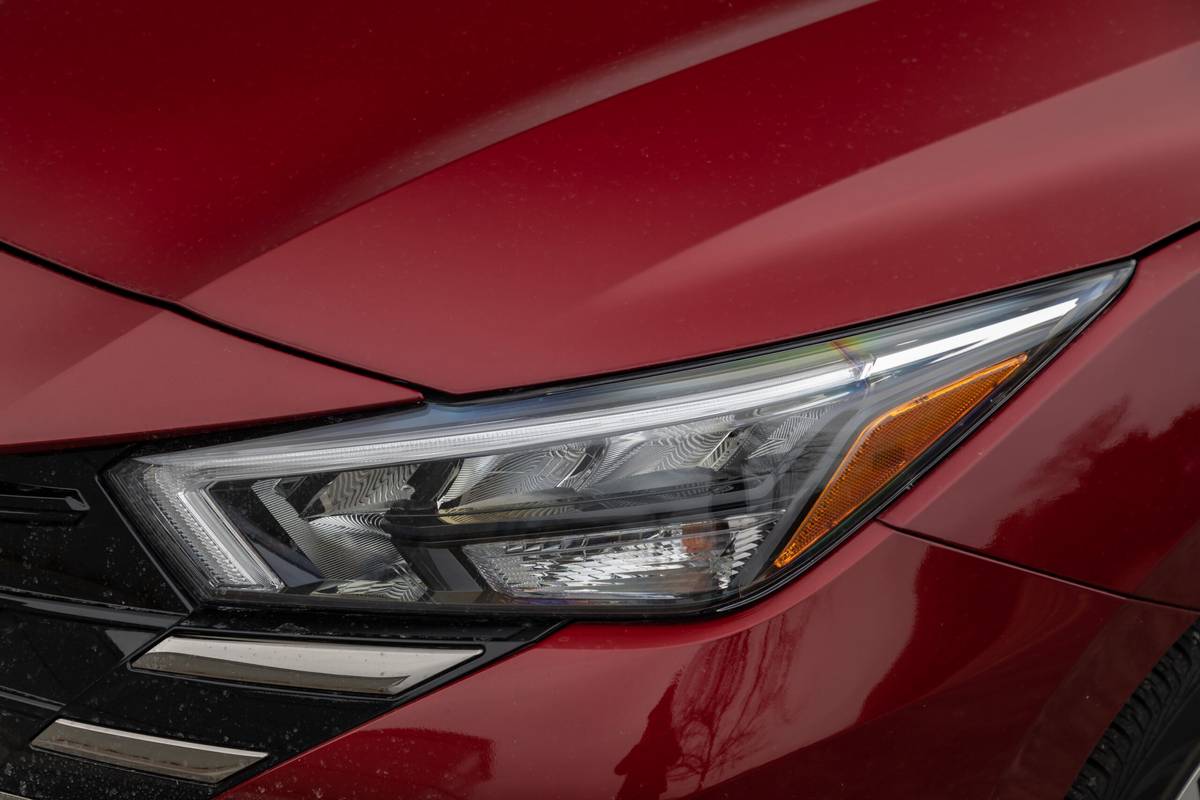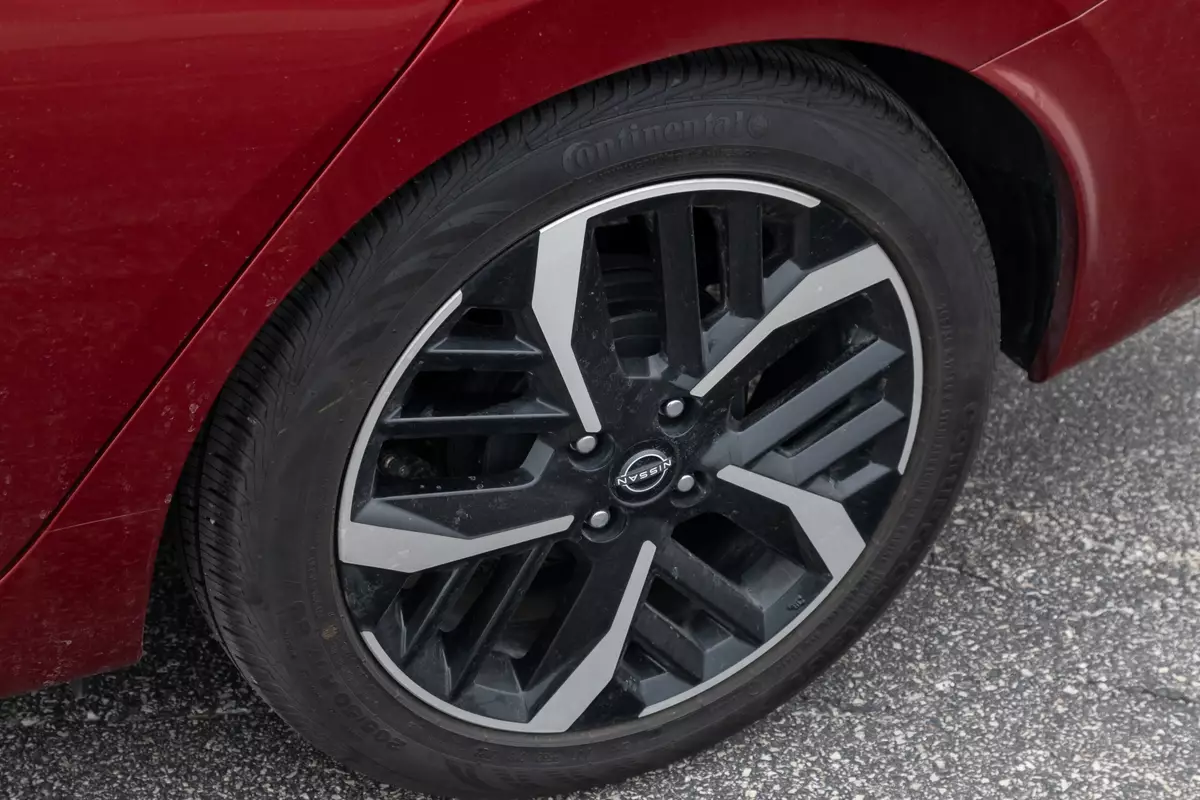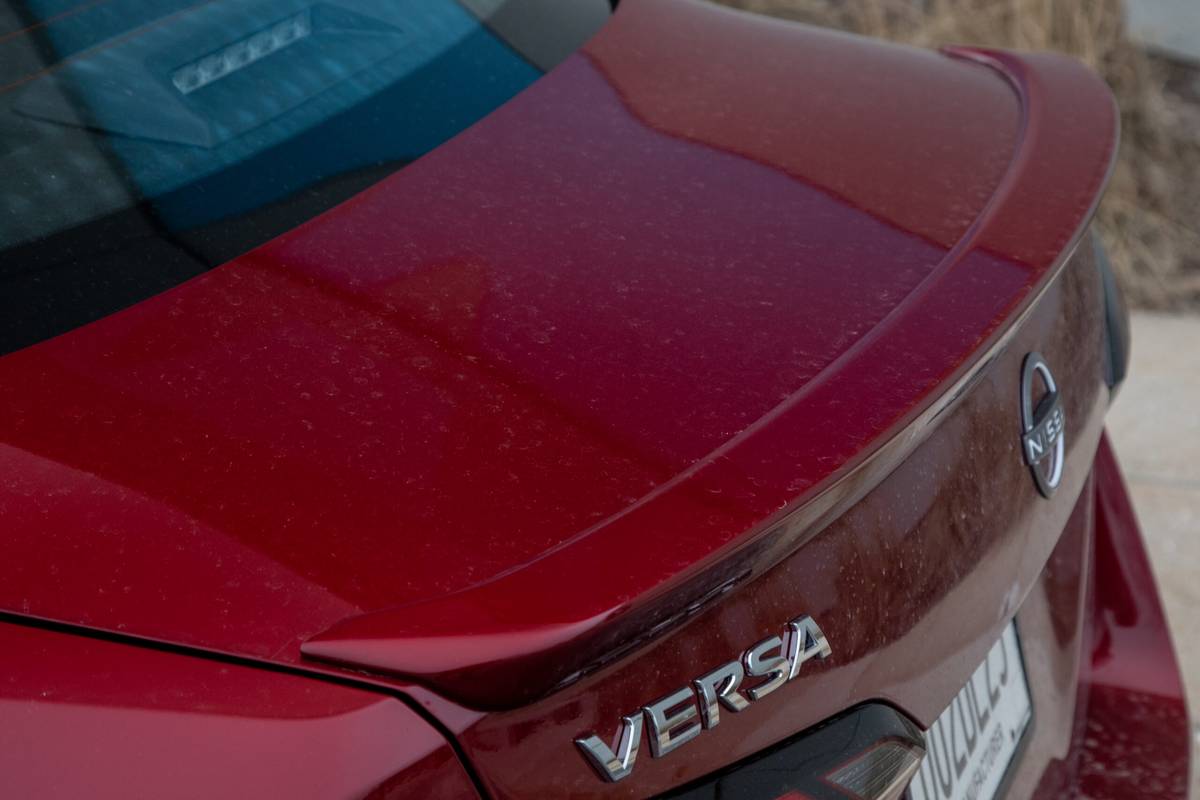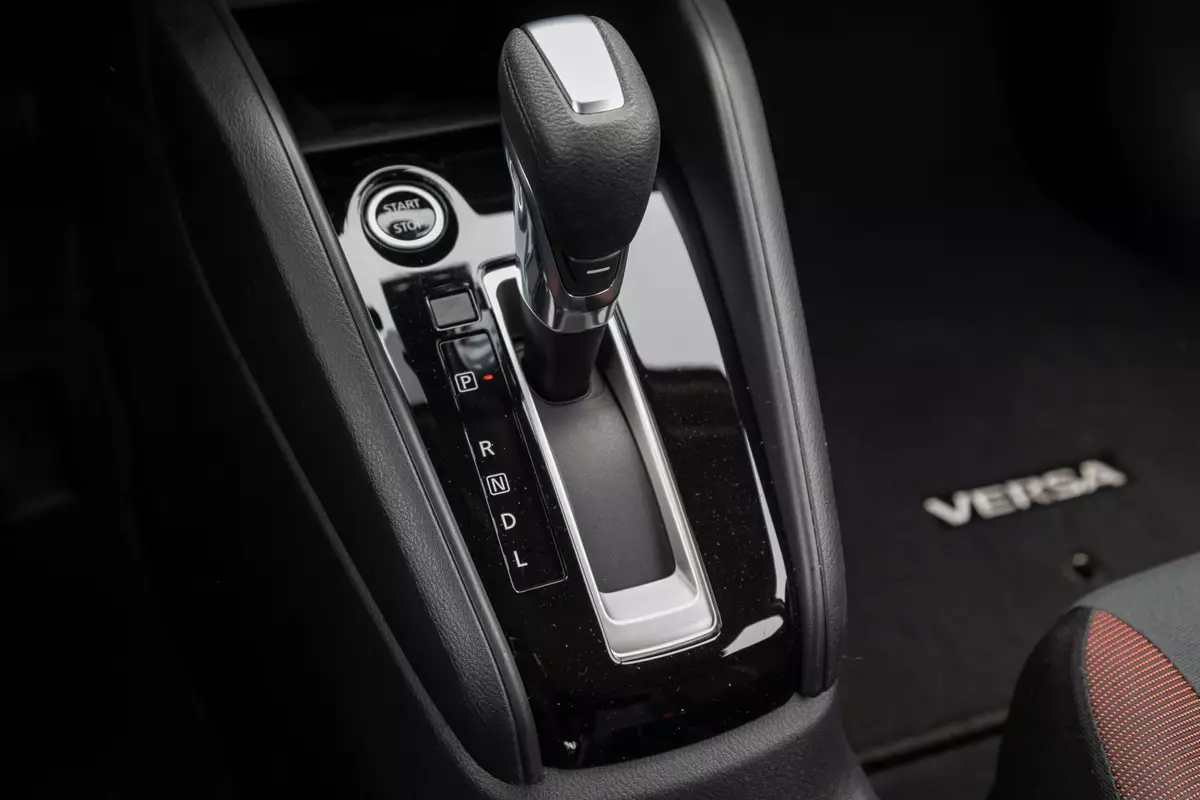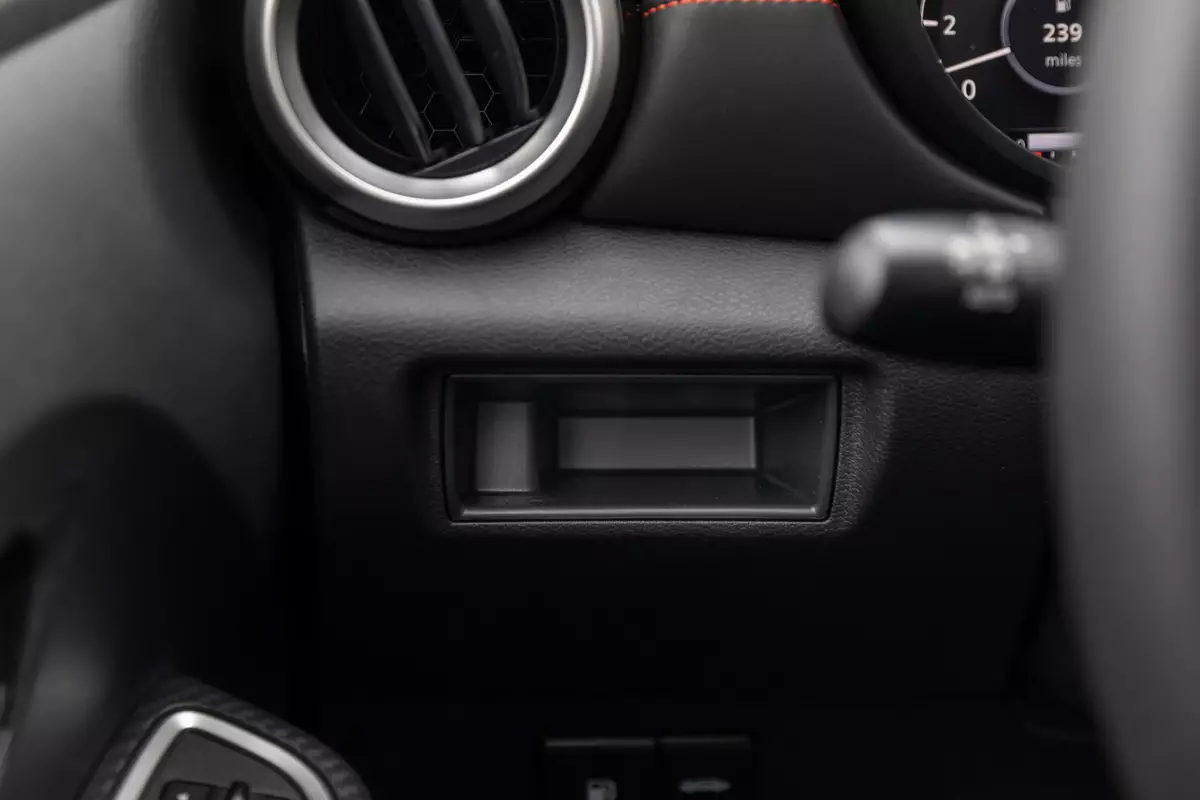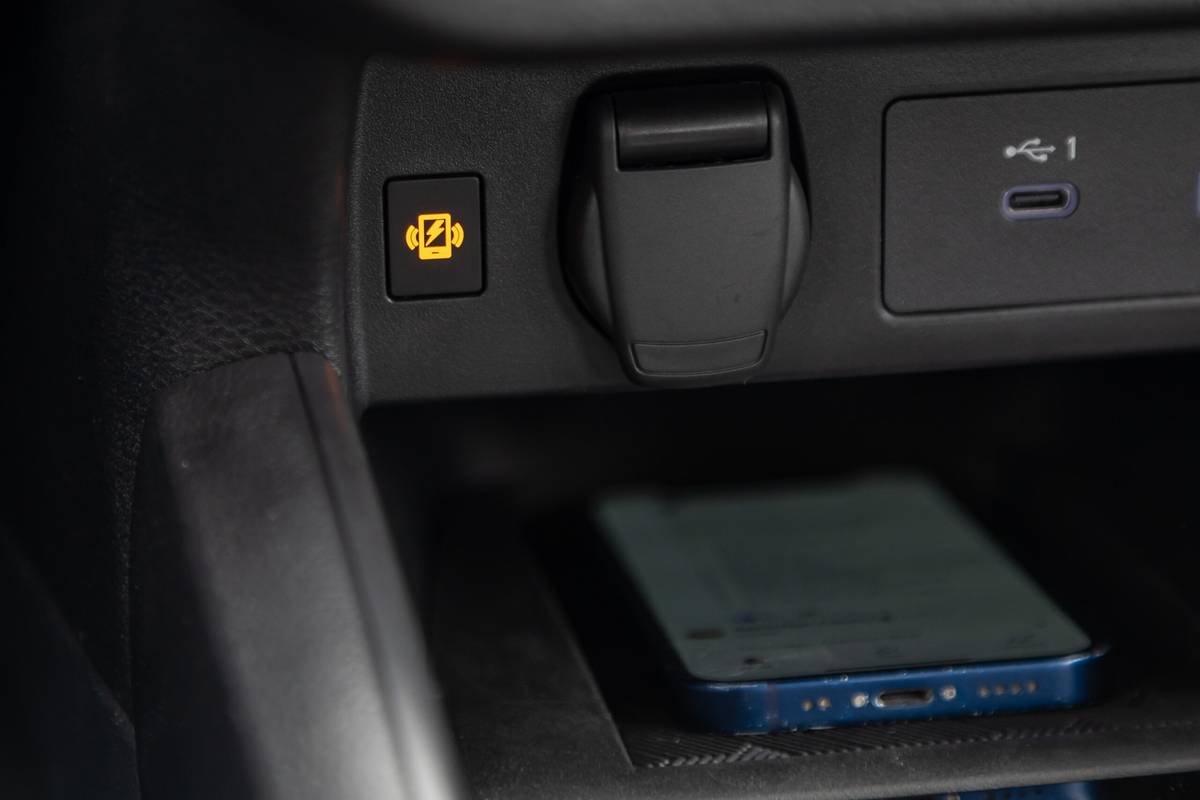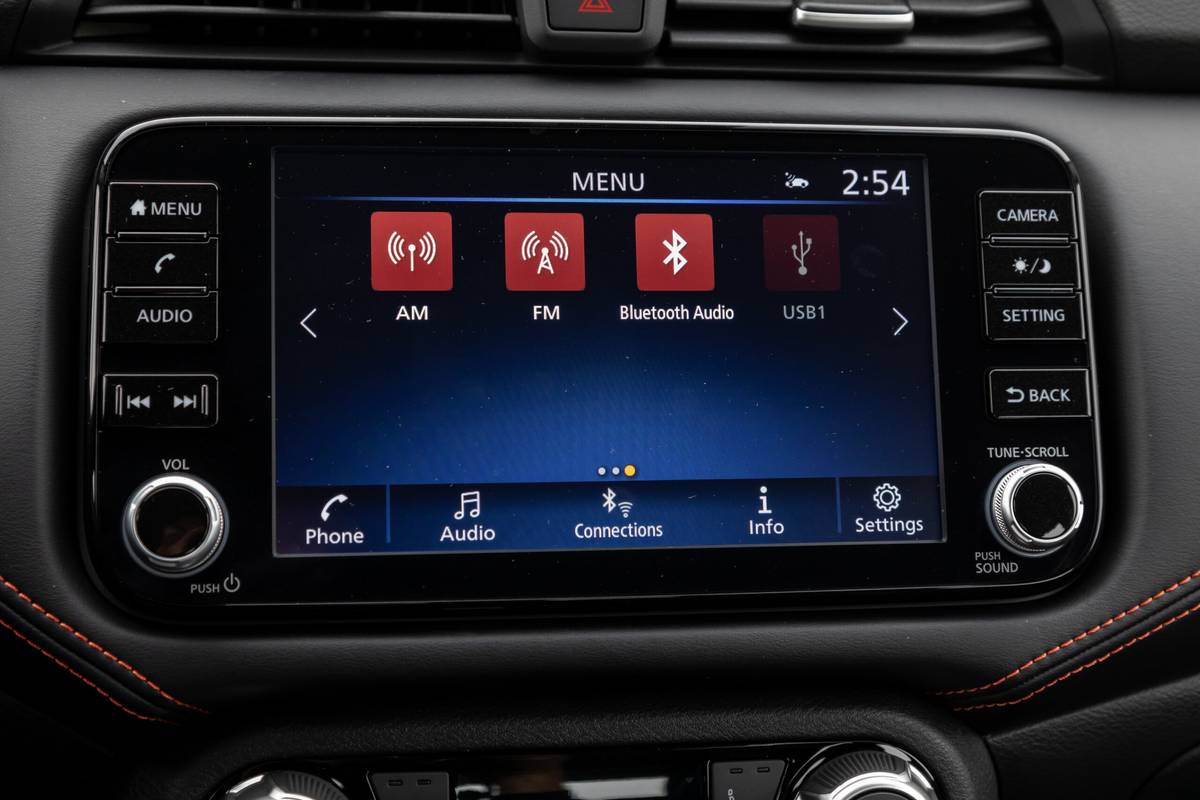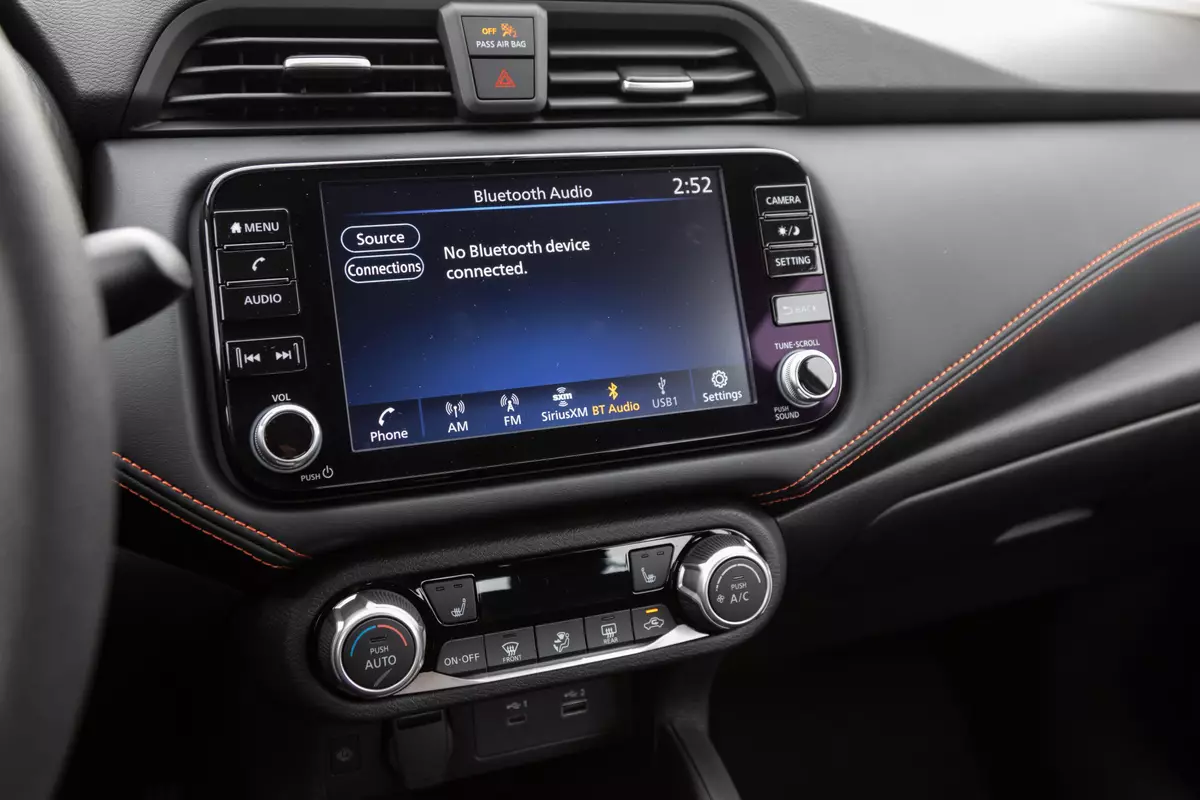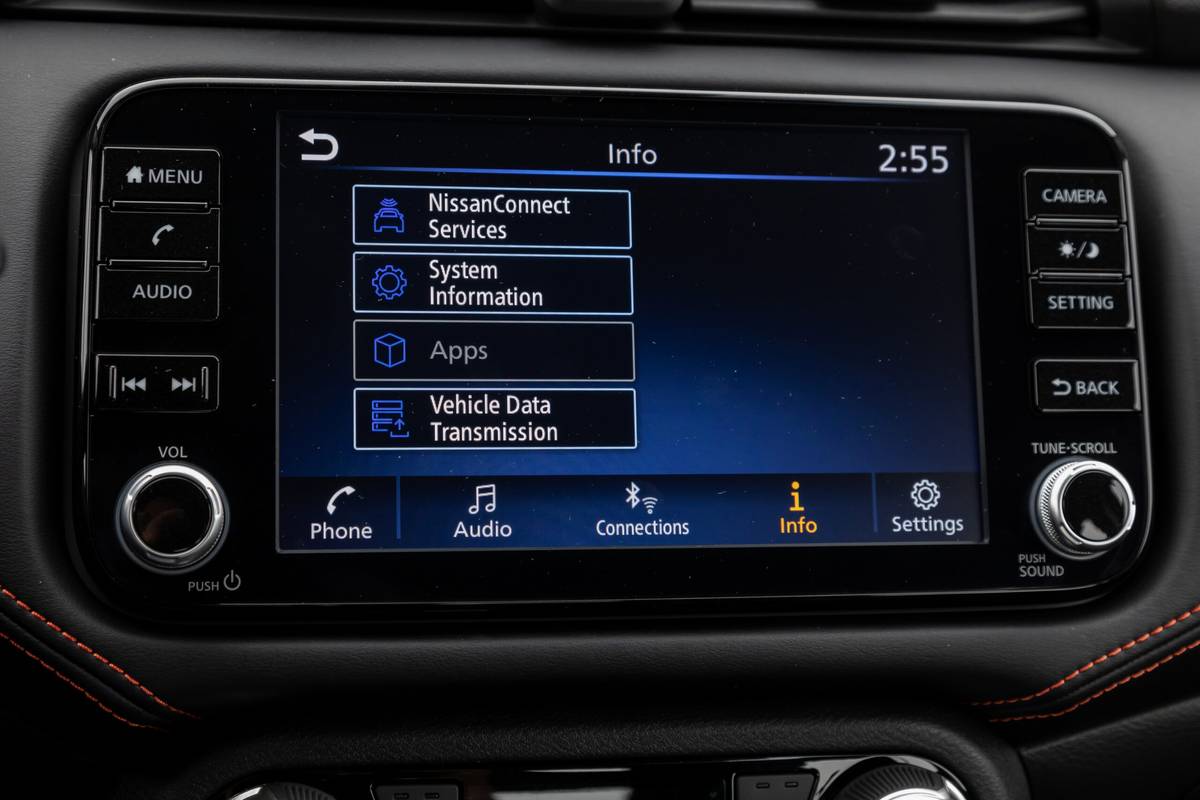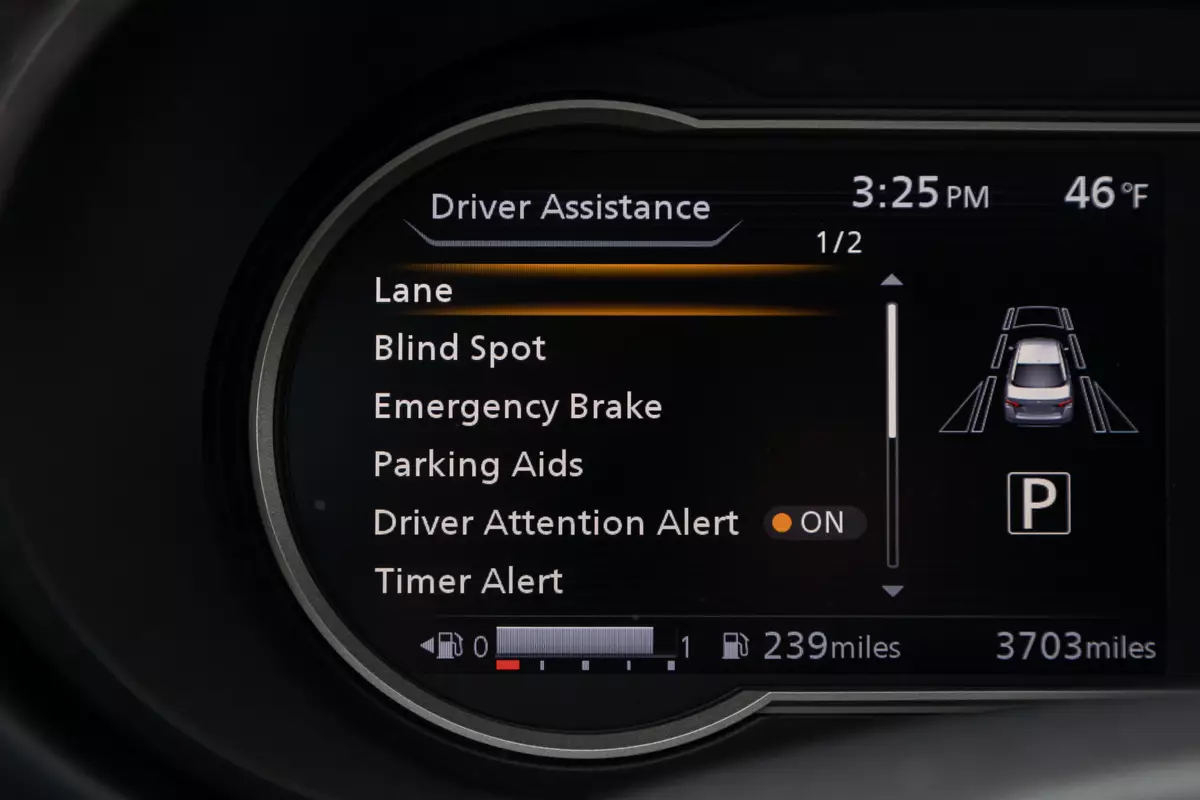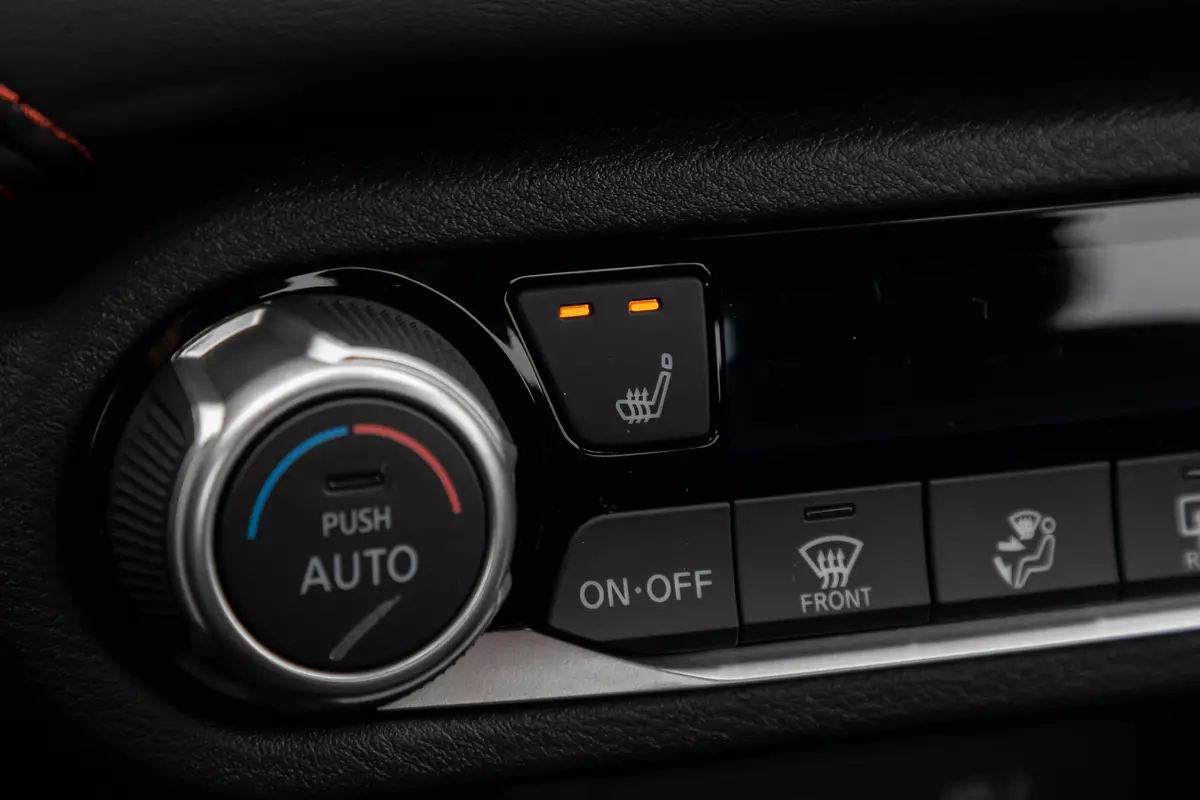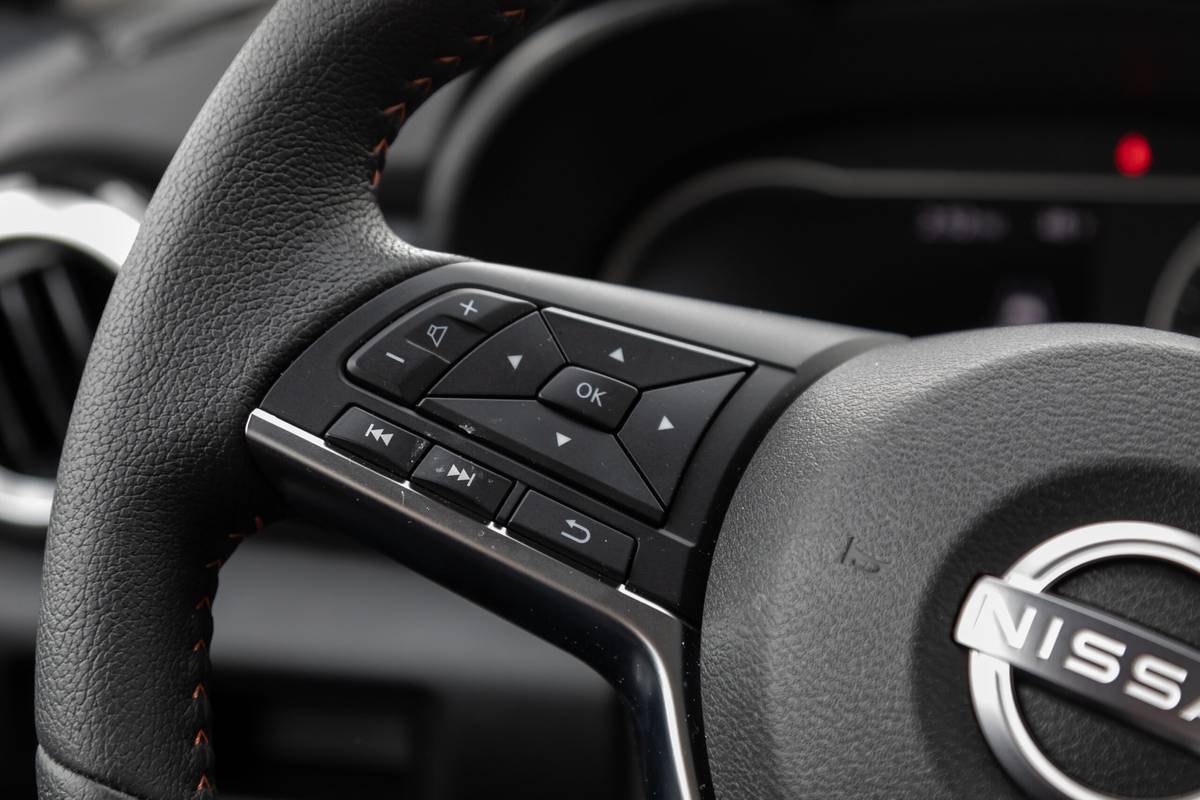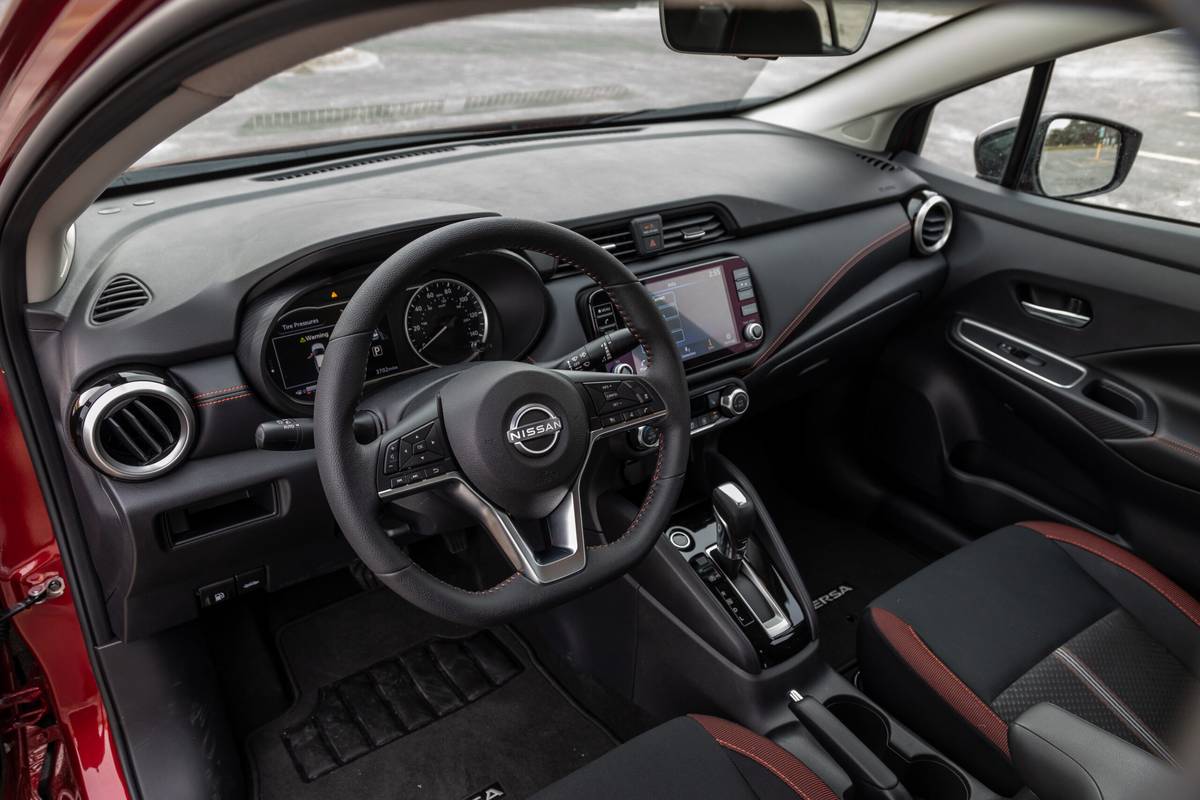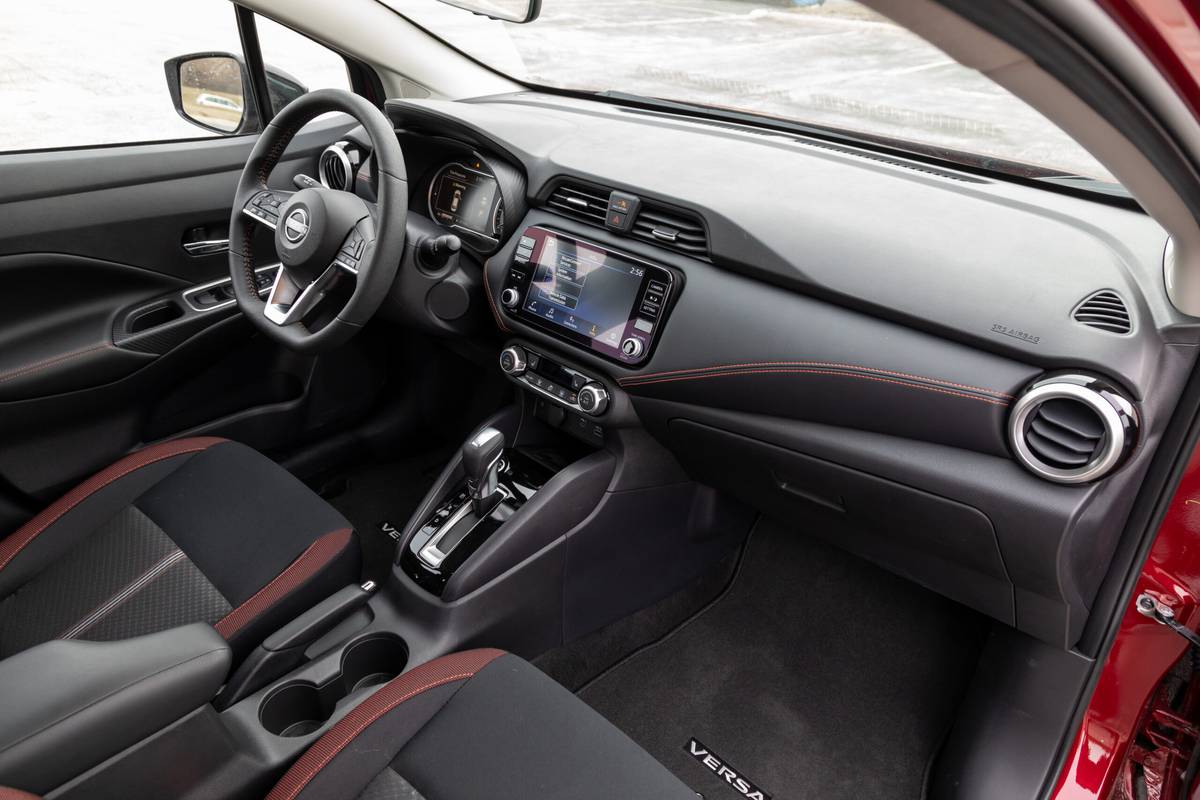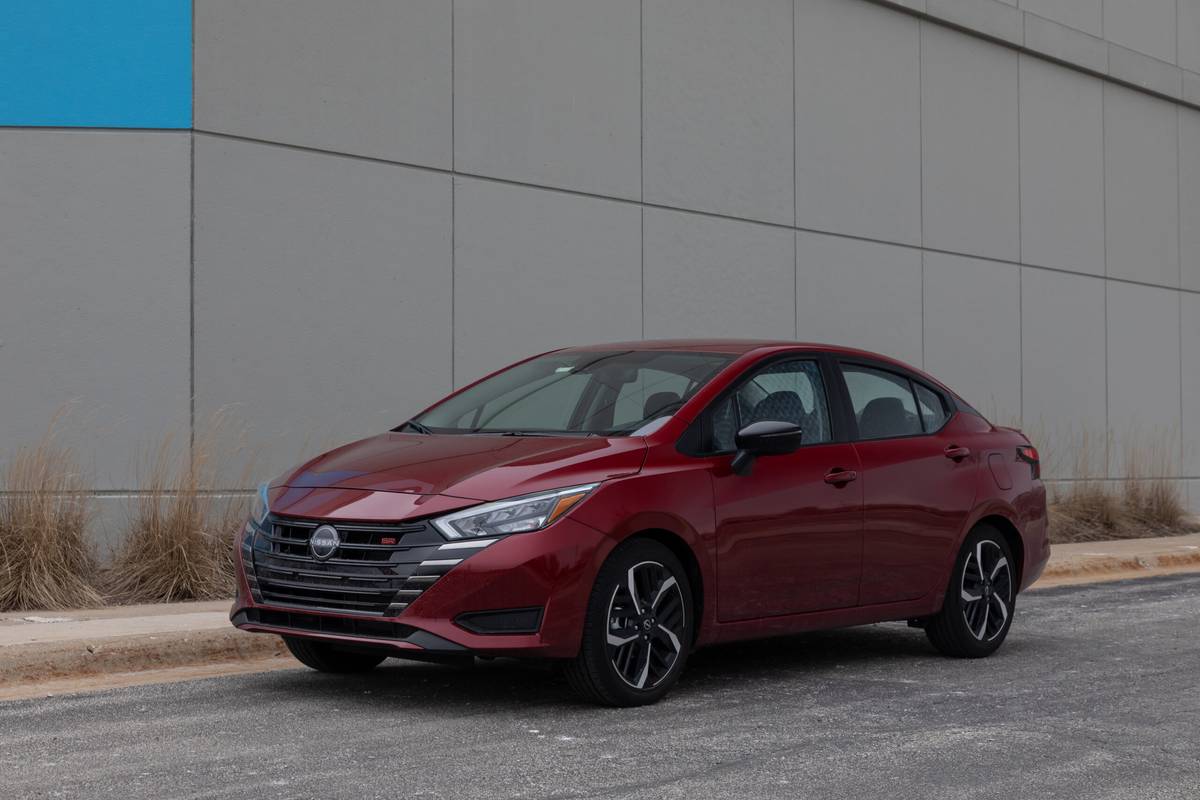
The verdict: The 2024 Nissan Versa is budget-grade transportation to be sure, but it delivers a better all-around driving experience — and a higher level of standard and available features — than you might expect given its bargain-basement pricing.
Versus the competition: Almost all other automakers have discontinued their traditional subcompact cars in recent years; the Mitsubishi Mirage is the Versa’s only remaining direct rival. Subcompact, front-drive-only SUVs like the Chevrolet Trax, Hyundai Venue and Nissan’s own Kicks, however, are similarly penny-pinching competitors.
Related: Here Are the 10 Cheapest New Cars You Can Buy Right Now
Are you a cheapskate? A tightwad? Do you want the peace of mind of owning a brand-new vehicle over a used car, but insist on paying as little as possible for that warranty protection and new-car smell? Well, I have bad news for you: The cheapest new-vehicle category — the subcompact car class — has shrunk like crazy in recent years, almost to the point of extinction. The 2019 model year included 11 entries in the segment, but in the ensuing five years, the Chevrolet Sonic, Chevrolet Spark, Ford Fiesta, Honda Fit, Hyundai Accent, Kia Rio, Toyota Prius c, and Toyota Yaris hatchback and Yaris Sedan have all said sayonara. The lowly Mitsubishi Mirage hatchback and Mirage G4 sedan — and the not-so-lowly Nissan Versa sedan — are all that remain.
Related Video:
We cannot generate a video preview.
As Cheap as It Gets
The Versa’s starting price of $17,530 (all prices include destination) makes it the cheapest new car on the market, narrowly undercutting the Mitsubishi Mirage hatchback’s starting price of $18,110 with required options. (Note that the Versa’s rock-bottom price is with its standard five-speed manual transmission, while the Mirage comes standard with an automatic.) Selecting the Versa’s optional continuously variable automatic transmission makes it a bit more expensive than the cheapest Mirage, but no matter the trim level or transmission, the Versa is much more pleasant to drive and ride in than the painfully slow, altogether unrefined Mirage.
Even in its top SR trim, the Versa starts at $21,540, which is roughly the same as base trims of the next-cheapest vehicles on the market. That list includes compact cars like the Hyundai Elantra, Kia Forte and Toyota Corolla, as well as subcompact SUVs that come only with front-wheel drive, including the Chevrolet Trax, Hyundai Venue and Nissan’s own Kicks. But those entry-level models don’t have the same feature content as a Versa SR, which comes standard with more stuff than you might expect.
The current-generation Versa debuted for the 2020 model year (gaining flashier styling than the dowdy second-gen model it replaced), and it sees no changes of note for 2024 after a mild freshening for 2023. Chief among last year’s updates were a redesigned, slightly more aggressive-looking grille, along with racier-looking alloy wheels for the SR trim and the welcome addition of more available features, including a wireless charging pad and an 8-inch touchscreen in place of the standard 7-inch screen.
What You Do and Don’t Get for the Money
The base Versa S is very basic, but it’s not 100% bare bones. It has power windows and locks, a 7-inch infotainment touchscreen, three USB ports and Bluetooth connectivity. It also gets automatic high-beam headlights, lane departure warning and forward collision warning with automatic emergency braking as standard equipment. Stepping up to the mid-line SV trim adds a wireless charging pad, heated side mirrors, push-button start, Apple CarPlay and Android Auto connectivity, and blind spot warning with rear cross-traffic alert.
The SR adds keyless access, adaptive cruise control, remote engine start, LED headlights, heated front seats, automatic climate control, a six-speaker audio system and the aforementioned 8-inch touchscreen, along with some interior and exterior cosmetic touches. Our Versa test car was an SR with a few extra-cost options, including Scarlet Ember Tintcoat paint ($395), illuminated door-sill kick plates ($216), carpeted floormats ($175) and a frameless auto-dimming rearview mirror with HomeLink ($282). They pushed its as-tested price to $22,608.
That’s a very generous level of equipment for the money, but there are still several features that aren’t on the menu. If you want wireless Apple CarPlay or Android Auto connectivity, leather (or even faux leather) upholstery, a heated steering wheel, a moonroof, a 360-degree camera system or a flip-down center armrest in the backseat, you’re out of luck.
Weak-Kneed and Noisy (Sometimes)
The Versa’s biggest shortcomings are power and engine noise. Its 122-horsepower, 1.6-liter four-cylinder engine easily outclasses the Mirage’s 78-hp, 1.2-liter three-cylinder, but that’s not saying much. The Versa is decently peppy and responsive in city driving, but it runs out of steam quickly on the highway. Summoning adequate passing power usually requires flooring the gas pedal, which creates as much racket from the engine as it does acceleration. The CVT does engine noise and throttle response no favors; the transmission has a “rubber-band” feel, with a noticeable buildup in engine revs before acceleration comes on in earnest.
The Versa’s chassis also makes some pronounced thumping noises over bumps and extra-rough pavement, which can also induce some jittery reverberations, but overall, the Versa rides comfortably for a subcompact car; its suspension is reasonably adept at absorbing most everyday bumps and ruts. When the engine isn’t working hard to accelerate, its noise level drops and the Versa is respectably quiet, even in highway driving. Both road noise and tire roar are quelled quite well.
Subcompact cars are especially easy to maneuver and park in tight spaces, and so it is with the Versa. It also feels decently lively in corners by virtue of its small size, but it’s not a particularly polished handler. In addition to the aforementioned reverberations, the steering doesn’t feel as connected or responsive as, say, any Honda or Mazda small car.
Cheap, Cheerful Cabin
The Versa’s interior is obviously built to a price, but it’s perfectly pleasant — even interesting — for the money. The dashboard design has some sporty personality, and accents like simulated-leather trim inserts, orange contrast stitching, satin-silver-finish bits, and even some faux carbon-fiber texturing on the door panels help dress up the hard-plastic parts.
The seats benefit from some contrasting colors and detailing, but the upholstery itself is low-buck fabric. I found the front-seat cushions to be a bit too spongy for the best support (and I wonder if that “airy” cushioning foam might deteriorate over time), but a fellow editor found both the front and rear seats a little too firm for his tastes. He also complained that the hard-plastic center console rubbed below his knee when driving, which is likely to be a big issue during longer trips.
Speaking of the center console, its dual cupholders are a little too small to handle extra-large beverages, but the storage bin is decently deep and spacious, and its padded armrest lid is comfortably cushioned. There’s enough space in the front seats for my 6-foot-6 frame, with adequate headroom and legroom, but the backseat isn’t as good. It’s too cramped for me to sit comfortably, and a 6-foot-1 editor also had to slouch a bit due to the limited headroom, though he was fine in terms of legroom and shoulder room. Materials quality falls off a bit more in the backseat, and as previously mentioned, there’s no center armrest or cupholders. Passengers will have to make do with the bottleholders in the door-panel pockets.
Though the Versa’s small-items storage is only so-so, its trunk is generously sized: SV and SR trims boast 15 cubic feet of cargo volume, according to Nissan’s measurements. That’s close to the factory measurements of some mid-size sedans, including the Toyota Camry and Nissan’s own Altima. The rear seatbacks fold down to expand cargo capacity, but they don’t fold flat with the cargo floor: There’s a 4- or 5-inch step that makes it difficult to slide oversized items forward.
Simple Controls
The Versa’s control layout is simple and straightforward, with easy-to-use physical buttons and knobs. In SV and SR trims, a digital display takes up about two-thirds of the gauge cluster, augmenting an analog speedometer. Drivers can toggle through a variety of helpful readouts on the configurable screen, including an analog-style virtual tachometer, driver-assist feature status, a Bluetooth connected device display, a tire-pressure-monitor display, and both instantaneous and average fuel economy.
We didn’t do a full, measured fuel-economy test in the Versa, but the dashboard readout showed average fuel economy of 30.6 mpg after about 230 miles of mostly city driving. That’s not outstanding for a subcompact — and it’s a bit shy of the automatic-transmission Versa’s EPA rating of 32/40/35 mpg city/highway/combined — but it’s respectable for a non-hybrid vehicle. And, of course, the expense of a hybrid powertrain would significantly raise the Versa’s sticker price.
More From Cars.com:
- 2024 Nissan Versa: Budget-Friendly Sedan Starts at $17,225
- Sub-$30,000 New Cars Are So Hot Right Now: Report
- 2024 Chevrolet Trax Quick Spin: Fully Loaded and Only $26,000?!
- Research the 2024 Nissan Versa
- Shop for a 2024 Nissan Versa
Last of the True Penny-Pinchers?
Considering the extreme attrition the subcompact car category has experienced in recent years, it’s conceivable that the Versa and Mirage might have enjoyed an uptick in sales, given they now have the class all to themselves. Nope: Versa sales have trended downward over the past decade, and Mirage sales — which were never robust — have dropped significantly in the past couple years. Both cars are reportedly slated to be discontinued after the 2025 model year. I don’t think anyone will mourn the Mirage’s demise, but as a person who turns his knuckles white attempting to squeeze every possible glob of toothpaste out of a nearly empty tube, I, for one, will be a little sad to see the Versa go away.
Cars.com’s Editorial department is your source for automotive news and reviews. In line with Cars.com’s long-standing ethics policy, editors and reviewers don’t accept gifts or free trips from automakers. The Editorial department is independent of Cars.com’s advertising, sales and sponsored content departments.



































